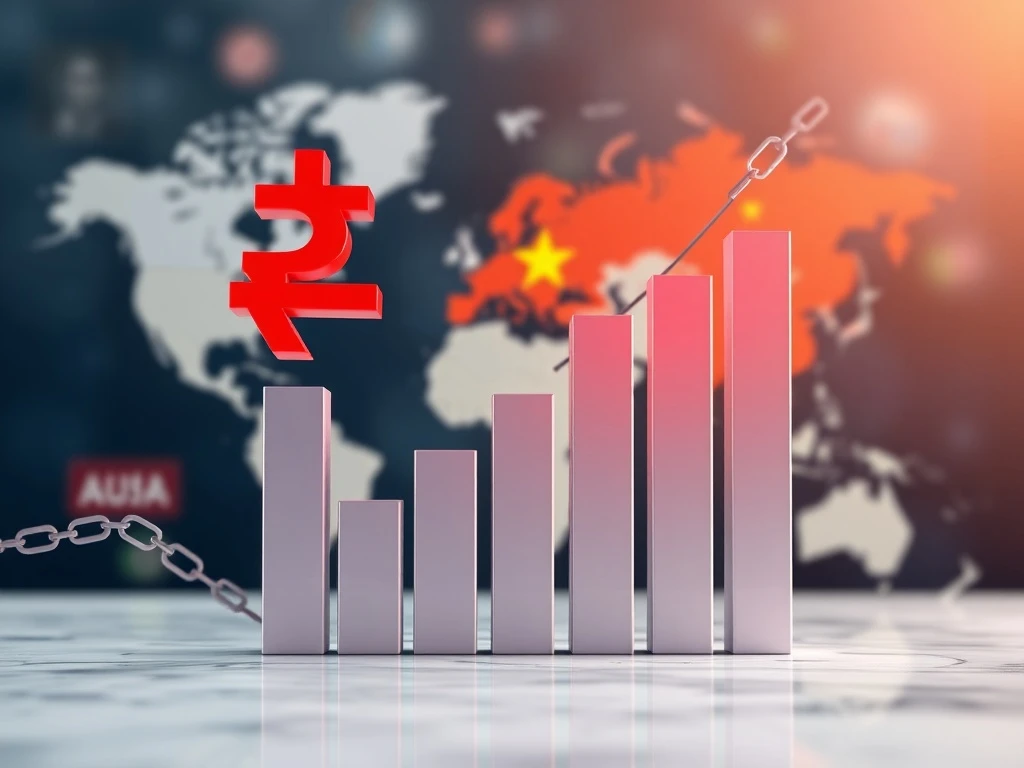A7A5 Stablecoin Achieves Unprecedented Growth: Largest Non-USD Stablecoin Despite Sanctions

The cryptocurrency world often sees rapid shifts. Recently, the A7A5 stablecoin made headlines. This ruble-backed digital asset has become the world’s largest non-US dollar stablecoin. Its market capitalization surged to nearly $500 million. This remarkable growth occurred despite ongoing international sanctions and scrutiny.
The Dramatic Rise of the A7A5 Stablecoin
The A7A5 stablecoin experienced an extraordinary surge. Its market cap jumped by 250% in a single day. This increase added $350 million to its value. Consequently, it now holds a market capitalization of almost $500 million. This figure represents about 43% of the total market for non-US dollar stablecoins. Data from CoinMarketCap and DefiLlama confirm this significant achievement. Furthermore, this places A7A5 ahead of rivals like Circle’s euro-pegged EURC, which held $252 million at the time of reporting.
A7A5’s market value previously hovered between $120 million and $140 million. The recent leap underscores a growing trend. It highlights the increasing demand for alternatives to dollar-pegged stablecoins. A7A5 expressed its pride in this development. They stated on Telegram that a national digital currency can drive global change. This statement came as the project gained attention at Token2049 in Singapore.
Navigating Crypto Sanctions and Regulatory Hurdles
A7A5 launched in February. It presented itself as a token backed by fiat deposits. These deposits are held in reliable banks within Kyrgyzstan’s network. Pegged 1:1 to the Russian ruble, A7A5 promised daily passive income. This income equaled half of the interest on deposits. The token initially debuted on both Ethereum and Tron blockchains.
Soon after its launch, blockchain analysts linked A7A5 to Grinex. Grinex is a crypto exchange. Many consider it the successor to the sanctioned Russian Garantex exchange. In mid-August, the US Treasury Department announced sanctions. These sanctions targeted Garantex and related entities. The Treasury highlighted Moldovan oligarch Ilan Shor. They identified him as the owner of A7A5’s issuer, the sanctioned Russian bank Promsvyazbank (PSB).
The United Kingdom also imposed sanctions. They targeted several banks in Kyrgyzstan. Reports indicated Russia used A7A5 to bypass Western financial restrictions. These measures show the challenges faced by the ruble stablecoin. They also highlight the global efforts to enforce financial regulations.
The Ruble Stablecoin’s Presence at Token2049
A7A5’s sharp market cap increase occurred just before its appearance at Token2049. This major crypto industry event took place in Singapore. A7A5 hosted a booth there. Executive Oleg Ogienko also took the stage. His presence, and that of A7A5, sparked considerable controversy. Many in the crypto community called for stricter compliance. They urged regulators to close existing loopholes at industry events. This incident emphasizes the ongoing debate. It concerns how sanctioned entities interact with the global crypto ecosystem.
The Centre for Information Resilience (CIR) released a report. This nonprofit organization linked A7A5’s growth to ties with China. “Trade with China has emerged as the dominant focus of A7’s activities to date,” the CIR report stated. They also noted:
- 78% of A7A5 transactions went through Chinese jurisdictions by August 2025.
- The stablecoin has heavily expanded into Africa, with offices in Nigeria and Zimbabwe.
Further research is necessary. This research will help understand funding flows. It will also clarify the role of financial institutions. Such research might also uncover linkages to Russian political interference schemes. These findings suggest a complex web of international operations. They demonstrate the global reach of this particular ruble stablecoin.
Future Outlook for the Stablecoin Market Cap and Regulation
The rise of A7A5 presents a unique case study. It showcases a sanctioned entity achieving significant growth. This growth occurs within the digital asset space. The stablecoin market cap continues to evolve. Non-USD stablecoins like A7A5 challenge the dollar’s dominance. This development raises important questions about global financial systems. It also impacts the effectiveness of international sanctions.
Regulators face a difficult task. They must balance innovation with compliance. The A7A5 situation highlights the need for robust regulatory frameworks. These frameworks must address the complexities of cross-border crypto transactions. As the crypto landscape matures, such cases will likely become more common. The global community will watch closely. They will observe how A7A5 navigates future challenges and opportunities. Crypto News Insights reached out to A7A5 for comment but received no response by publication.









